McDonnell Douglas F-4 Phantom II — Proof a Brick Can Fly?
August 5th, 2023
8 minute read
With its distinctive high-mounted twin engines and swept-back wings the McDonnell Douglas F-4 Phantom II captures the eye immediately. One of the most recognizable military aircraft to ever serve in the United States, F-4s have proved to be capable fighters in the hands of American and allied pilots in conflicts all over the globe.
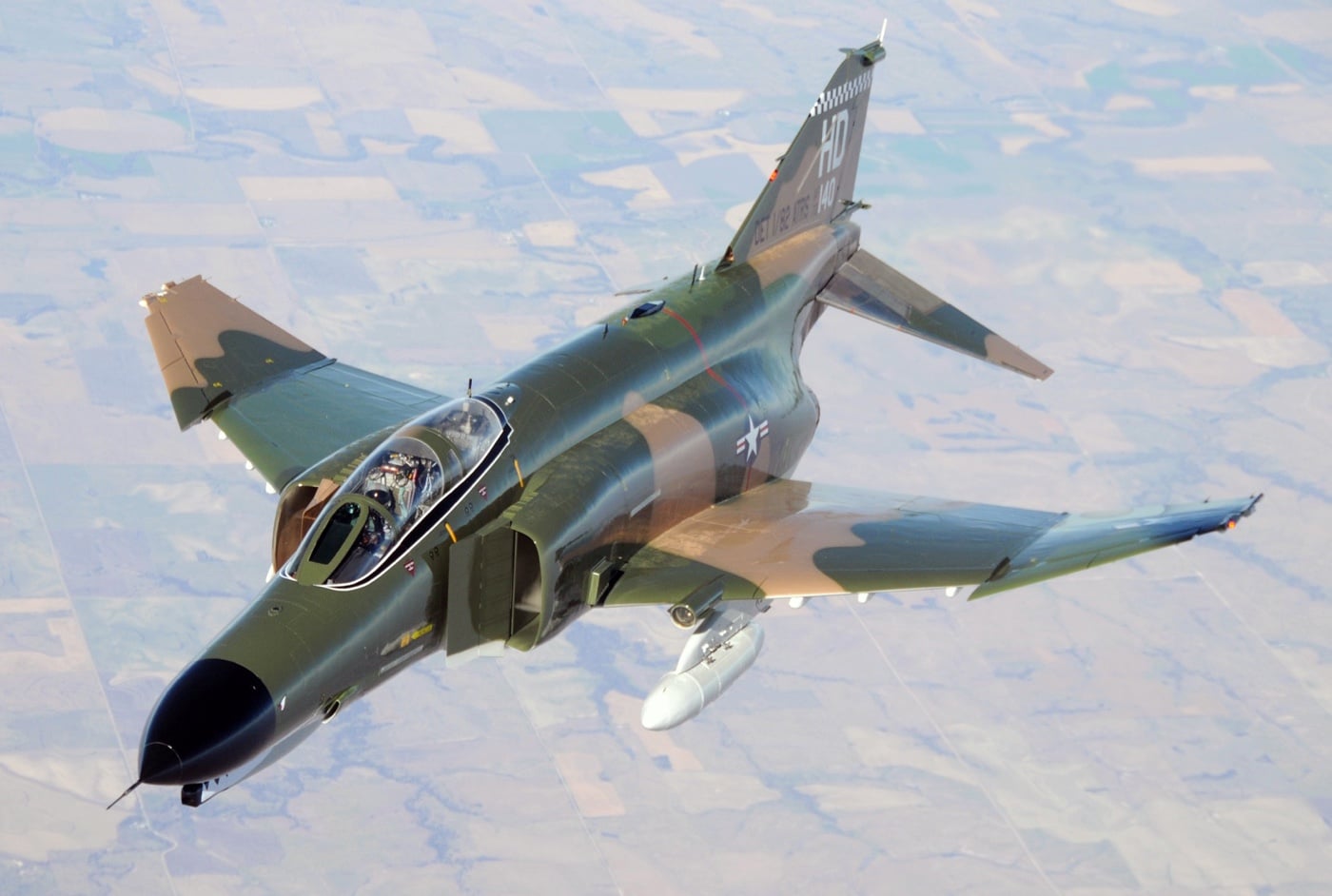
Developed in the late 1950s, the Phantom entered service in 1960 and would go on to see combat in the skies over Vietnam. The two-seater was one of the first true multi-role combat jets, able to conduct air superiority, reconnaissance, and ground attack missions. Its versatility made it a workhorse for the U. S. Air Force, Navy and Marine Corps for decades. The Phantom set numerous records, including flying higher and faster than any other fighter of its time. In today’s article, Dr. Will Dabbs puts us in the seat of this iconic fighter.
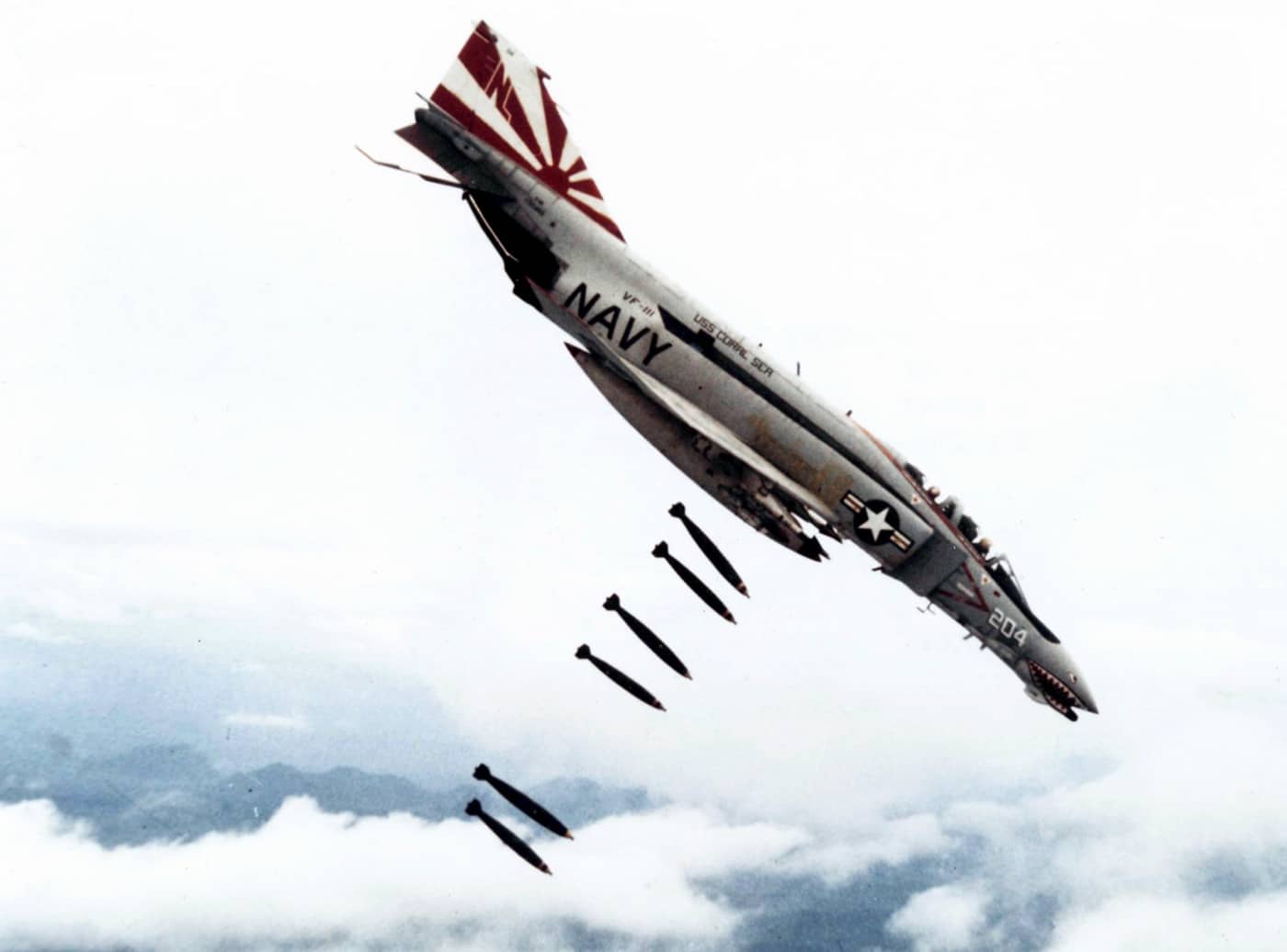
Dino Paul Crocetti, Jr. was born on 17 November 1951. Dino was a handsome kid with an engaging personality — the life of the party. He attended Urban Military Academy in Brentwood, California, before embarking on a career in show business. He enjoyed some modest success singing alongside the likes of Desi Arnez, Jr. and Billy Hinsche. He also acted with Ali McGraw in the 1979 movie Players along with a few others. He was married to the actress Olivia Hussey from 1971 until 1978 and then to gymnast Dorothy Hamill from 1982 through 1984. Though the Hollywood life is undeniably hard on relationships, by all accounts Dino’s star was rising.
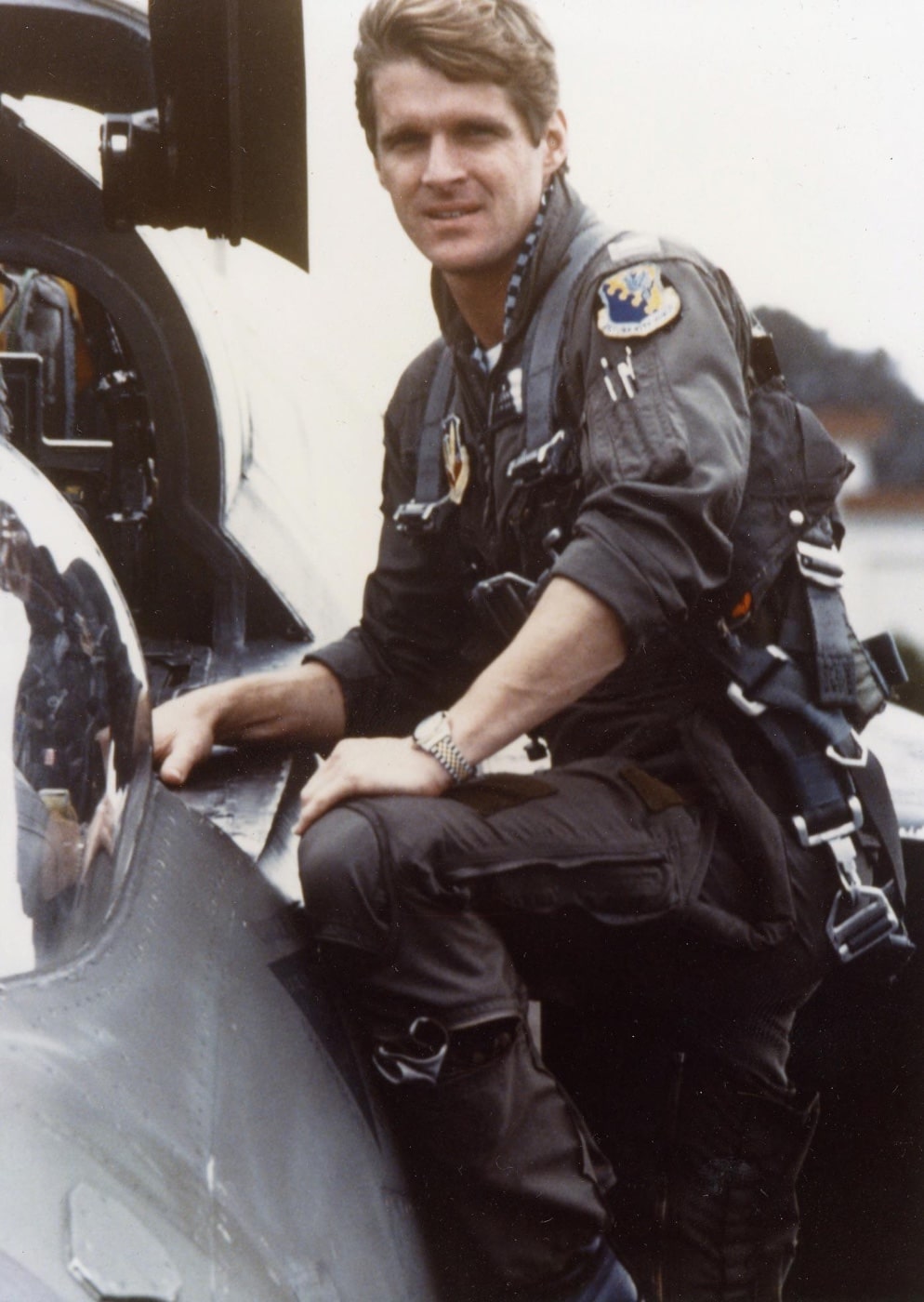
In addition to acting, Dino Crocetti was an avid pilot. He earned his private pilot’s license at 16 and joined the California Air National Guard in 1980. He was commissioned a Second Lieutenant and completed Air Force flight training at Columbus AFB in Mississippi. Once he got back home, Dino was assigned to 196th Tactical Fighter Squadron at March AFB in California flying the F-4C Phantom II. For an airplane nut, Dino was on the top of his game.
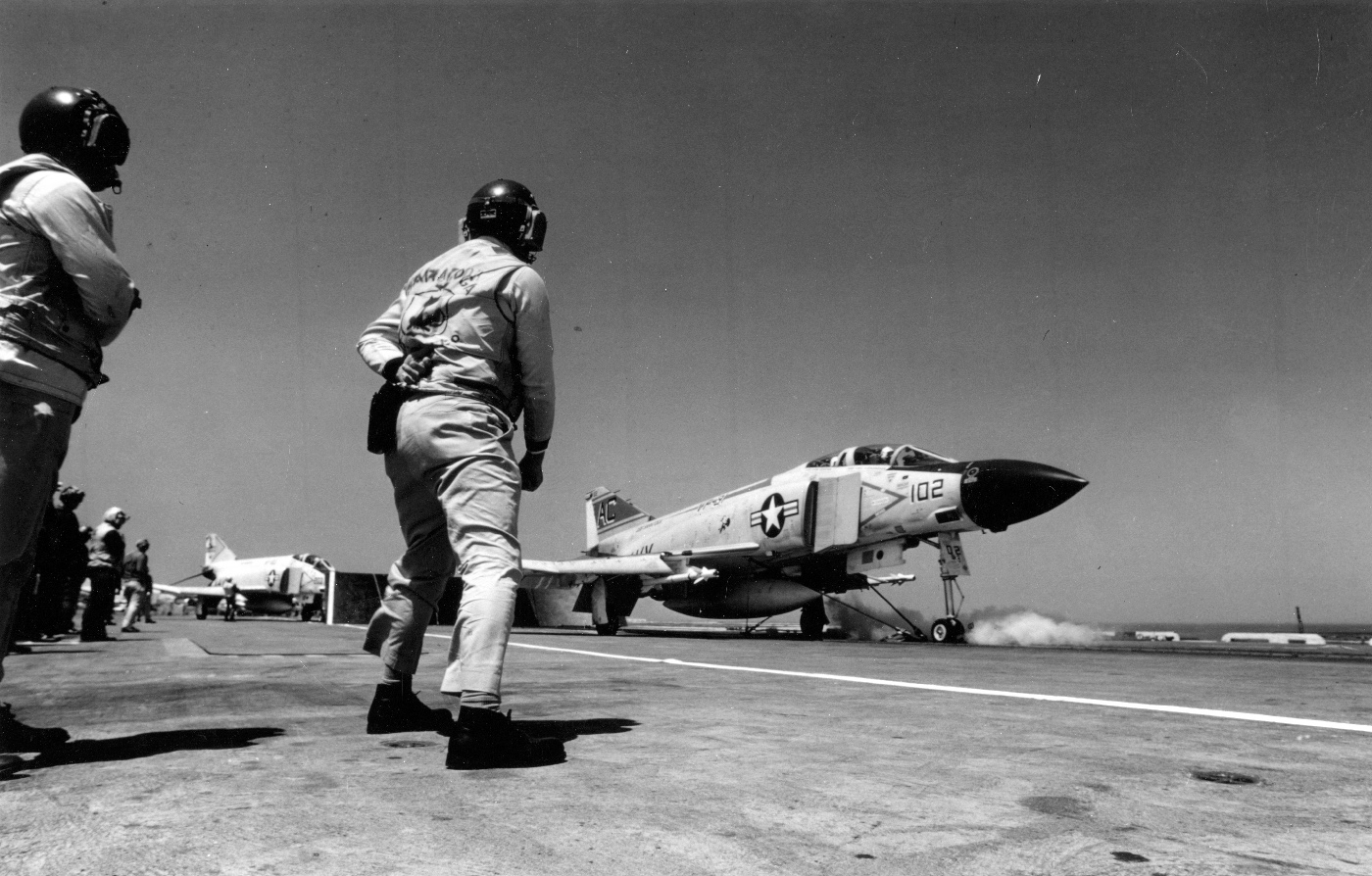
In 1987 at age 35, then-Captain Dino Crocetti climbed into the front seat of an F-4C for a routine training mission. His weapon system officer was Captain Ramon Ortiz. The two men blasted off in their heavy fighter before banking toward the designated training area over the San Bernardino Mountains. At some point they encountered a snowstorm and something bad happened. The plane crashed in a remote area, and both Crocetti and Ortiz were killed.
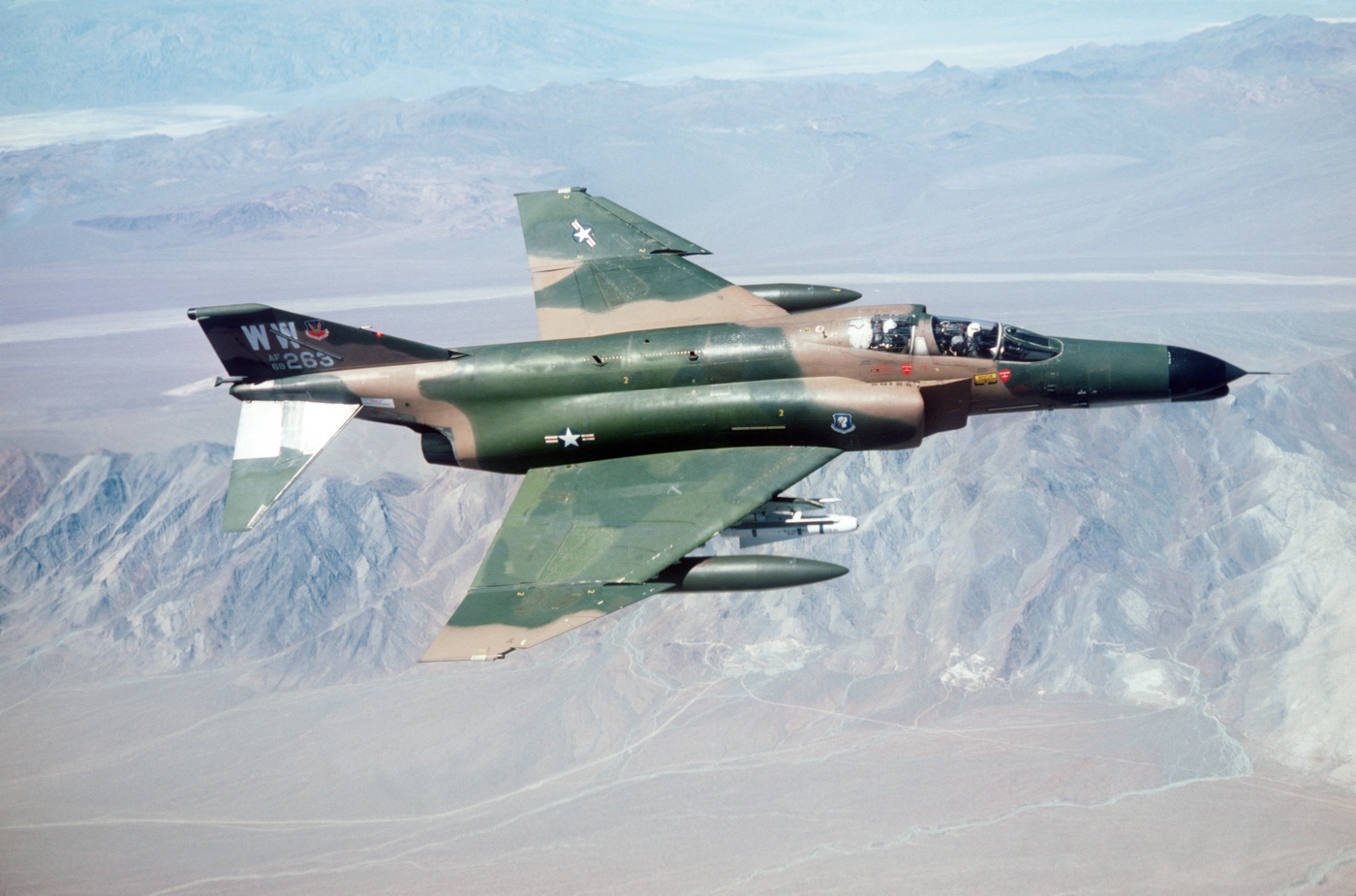
Two more great young Americans had given their lives for their country. One of the two heartbroken dads to receive that dreaded visit by the somber Air Force team in the Class A uniforms was Dino Paul Crocetti, Sr. Dino Senior’s wife was Jeanne Biegger. The world knew Dino Crocetti Sr. as Dean Martin, one of the most popular singers and actors of his era. Dino, Jr. was the fifth of Dean Martin’s eight children and Jeanne’s oldest son. Tragedy can clearly strike the families of servicemen regardless of their station in life. And the plane that ultimately carried the younger Dean Paul Martin to his death just happened to be one of the most successful combat jets ever produced.
The Flying Brick
The McDonnell Douglas F-4 Phantom II was an objectively sinister-looking warplane. The wings fused with the fuselage to create a homogeneous geometric plane. The wingtips sported a distinctive positive dihedral, while the horizontal stabilizers were cocked correspondingly downward. The resulting architectural dissonance made the plane look like some kind of predatory animal. The Phantom’s massive afterburning J79 turbojets pushed the big plane to a maximum speed of Mach 2.23.
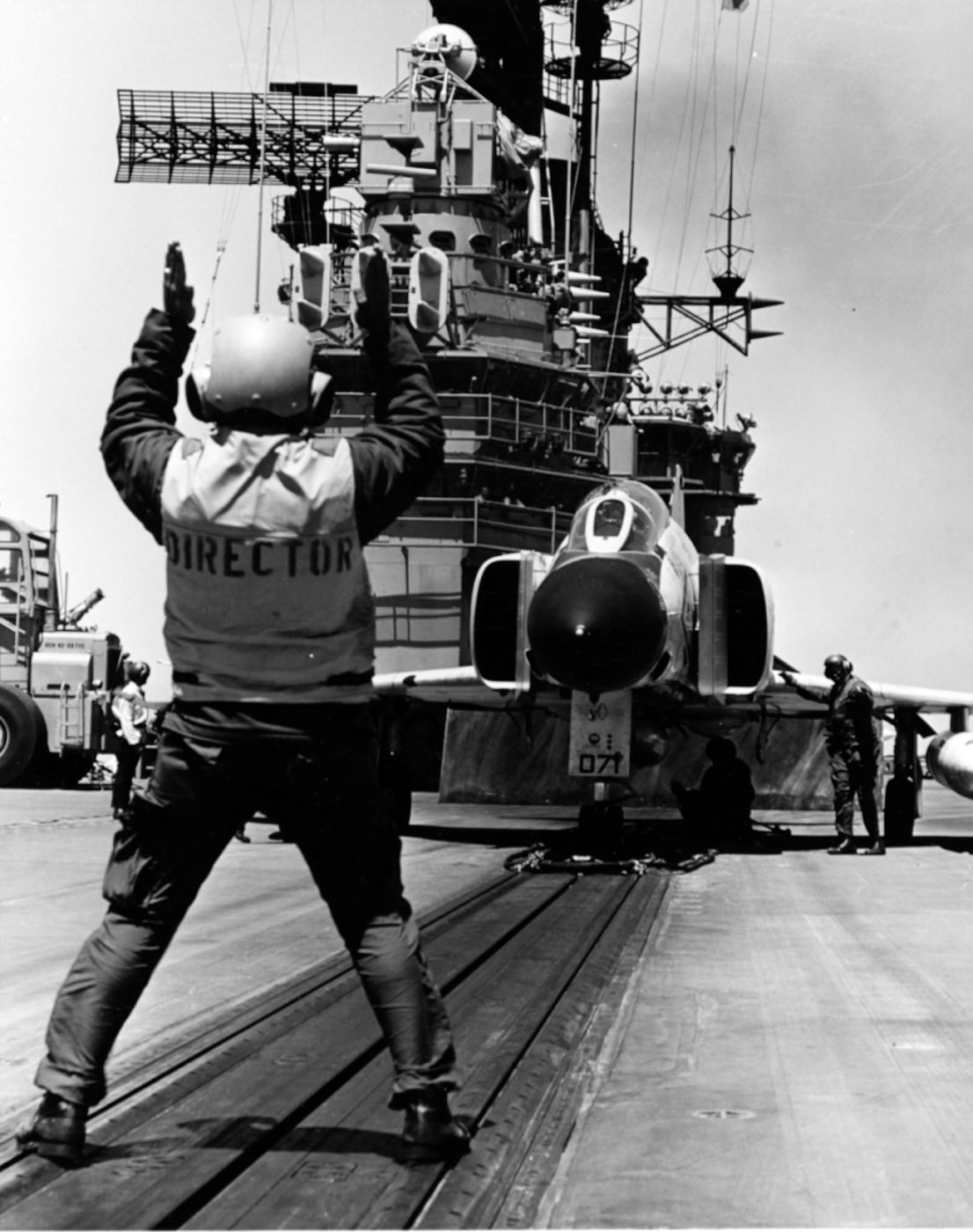
First flown on 27 May 1958, the F-4 Phantom II was one of the first all-weather, multi-role combat aircraft. The Phantom was developed at a time when onboard airborne radar was novel, and air combat was conducted at unprecedented speeds. As a result, a second flight crewman was added to help deal with the tactical workload. The original Phantom was designed to carry four AAM-N-6 Sparrow radar-guided missiles.
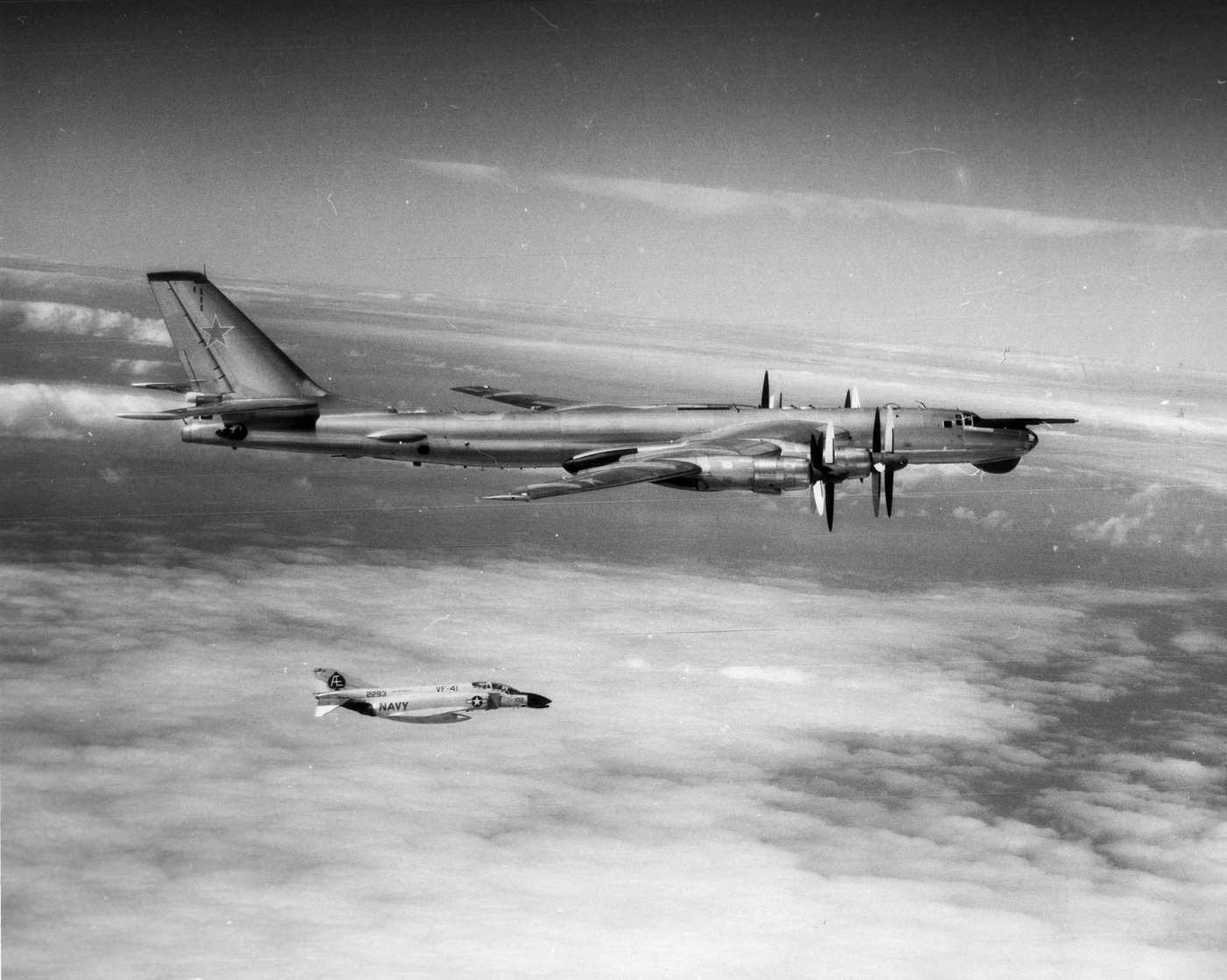
Wind tunnel testing showed that the plane suffered from an innate lateral instability. This drove the 5-degree dihedral to the distal wings and the 23-degree anhedral to the tailplane. Instead of elevators, the entire tailplane pivoted for aggressive pitch control.
The F-4 was a predominantly Navy project. However, Defense Secretary Robert McNamara and his whiz kids were scrubbing the military-industrial complex looking for ways to streamline and enhance efficiency. As a result, the Department of Defense conducted Operation Highspeed, a high-performance fly-off between developmental aircraft types to determine the optimal general-purpose fighter for all three pertinent services — the Navy, the Air Force and the Marine Corps.
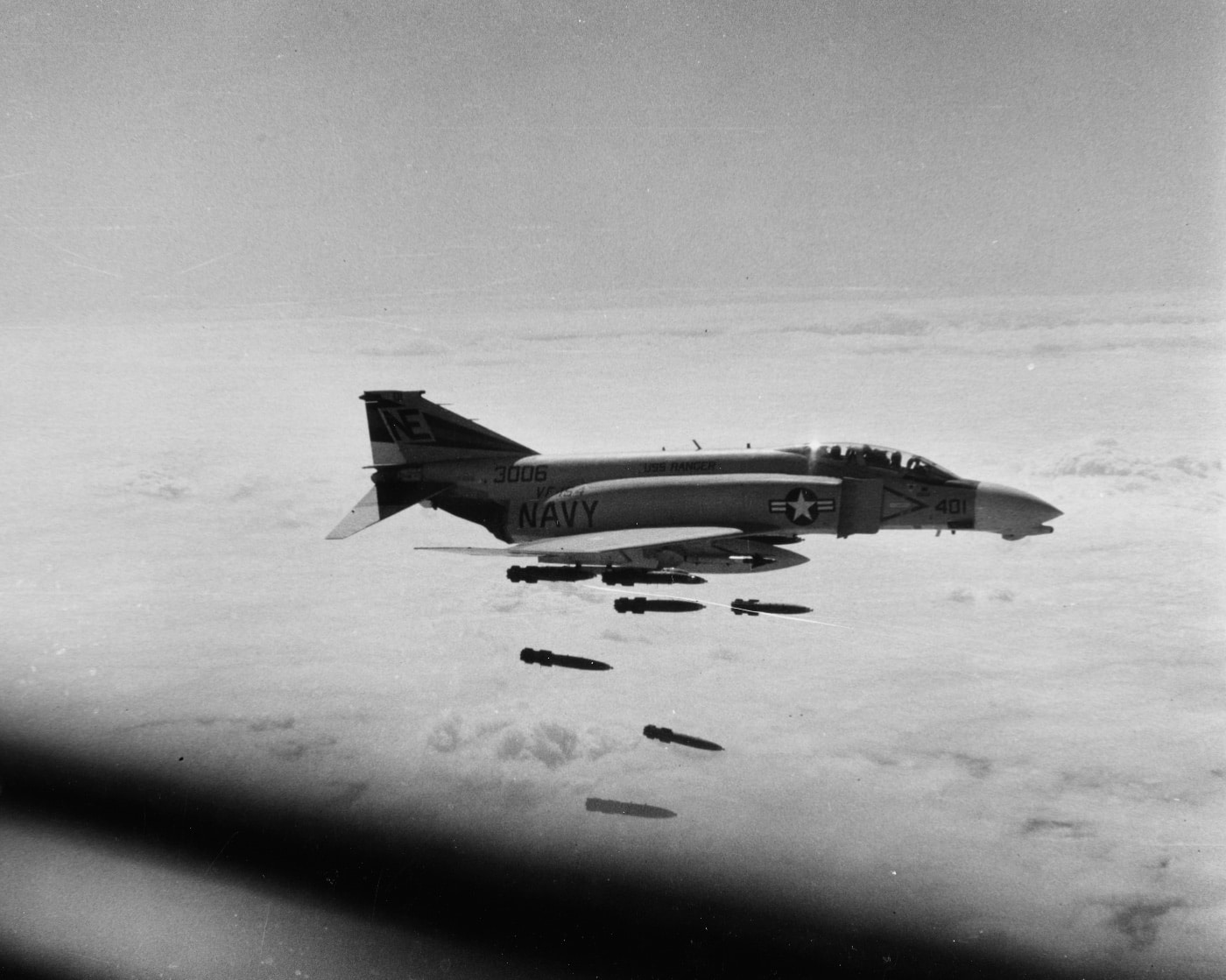
The F-4 beat out the Convair F-106 Delta Dart to take the prize. Though the Air Force and Navy versions differed in certain particulars, all three services indeed flew a common airframe. Despite extensive use of titanium in the structure, the Phantom still had a maximum takeoff weight of more than 60,000 pounds. This was one gigantic fighter plane.
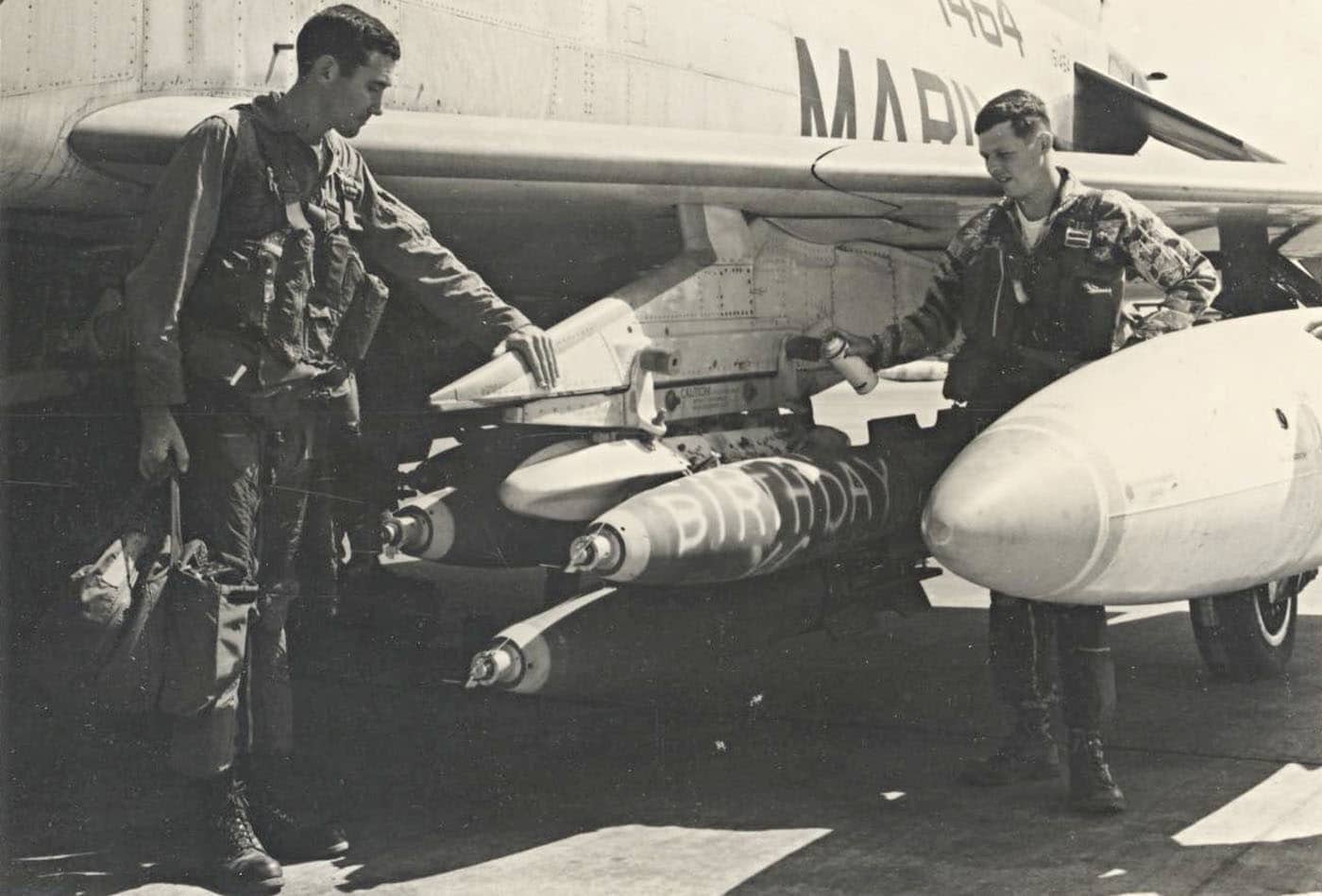
Early Phantoms came from the factory without a gun. Evolving doctrine held that future air combat would be conducted with missiles at high speed, not with machine guns. However, in practical use the lack of a gun became a liability. Mid-production Phantoms could be fitted with an external gun pod. These pods were difficult to keep boresighted and added aerodynamic drag. Later Phantoms had an internal M61A1 Vulcan rotary cannon mounted within the fuselage.
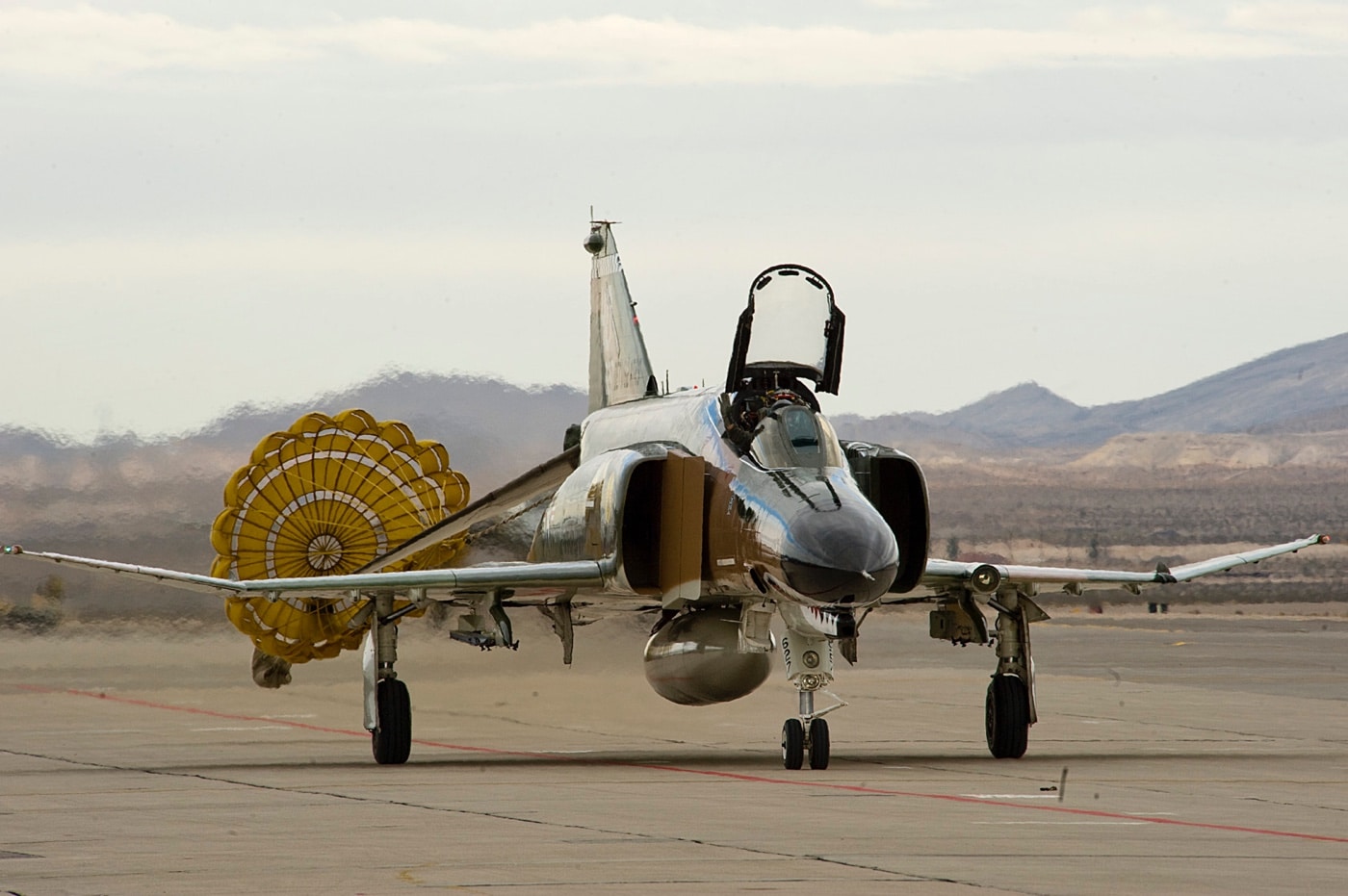
The Phantom could not turn with the agile communist fighters of the day such as the MiG-15 and MiG-17. However, the F-4 offered truly unprecedented power and load-carrying capacity. By maximizing the Phantom’s strengths against an opponent’s weakness, the Phantom became a force to be reckoned with in contested skies around the world. The Phantom pilot mantra was, “Speed is life.”
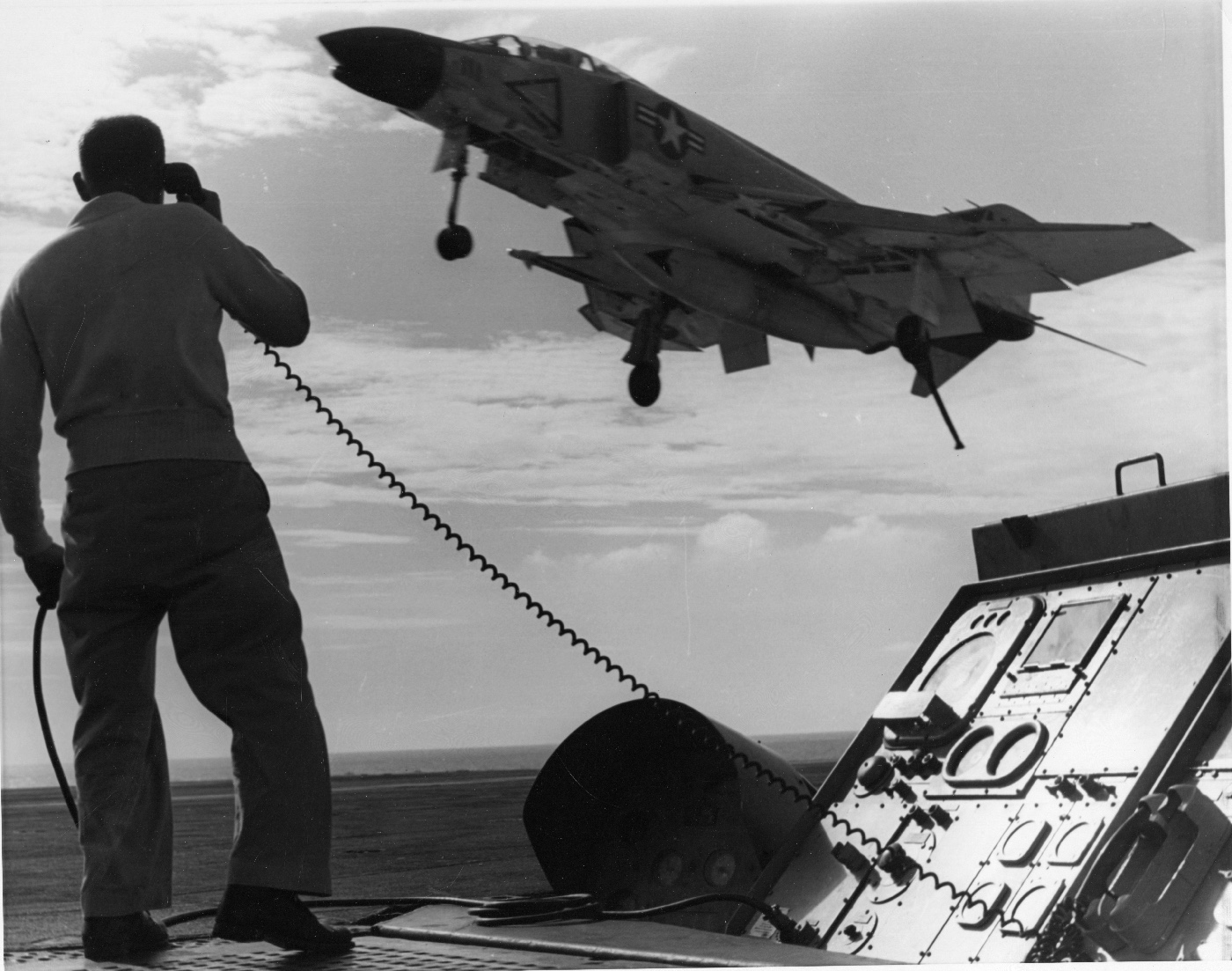
The F-4 Phantom II Goes to War
The Phantom saw widespread use as both an air superiority fighter and ground attack strike aircraft throughout the majority of the Vietnam War. The first USAF aerial victory of the war was scored by a Phantom firing an AIM-9 Sidewinder heat-seeking air-to-air missile against a North Vietnamese MiG-17 on 10 July 1965.
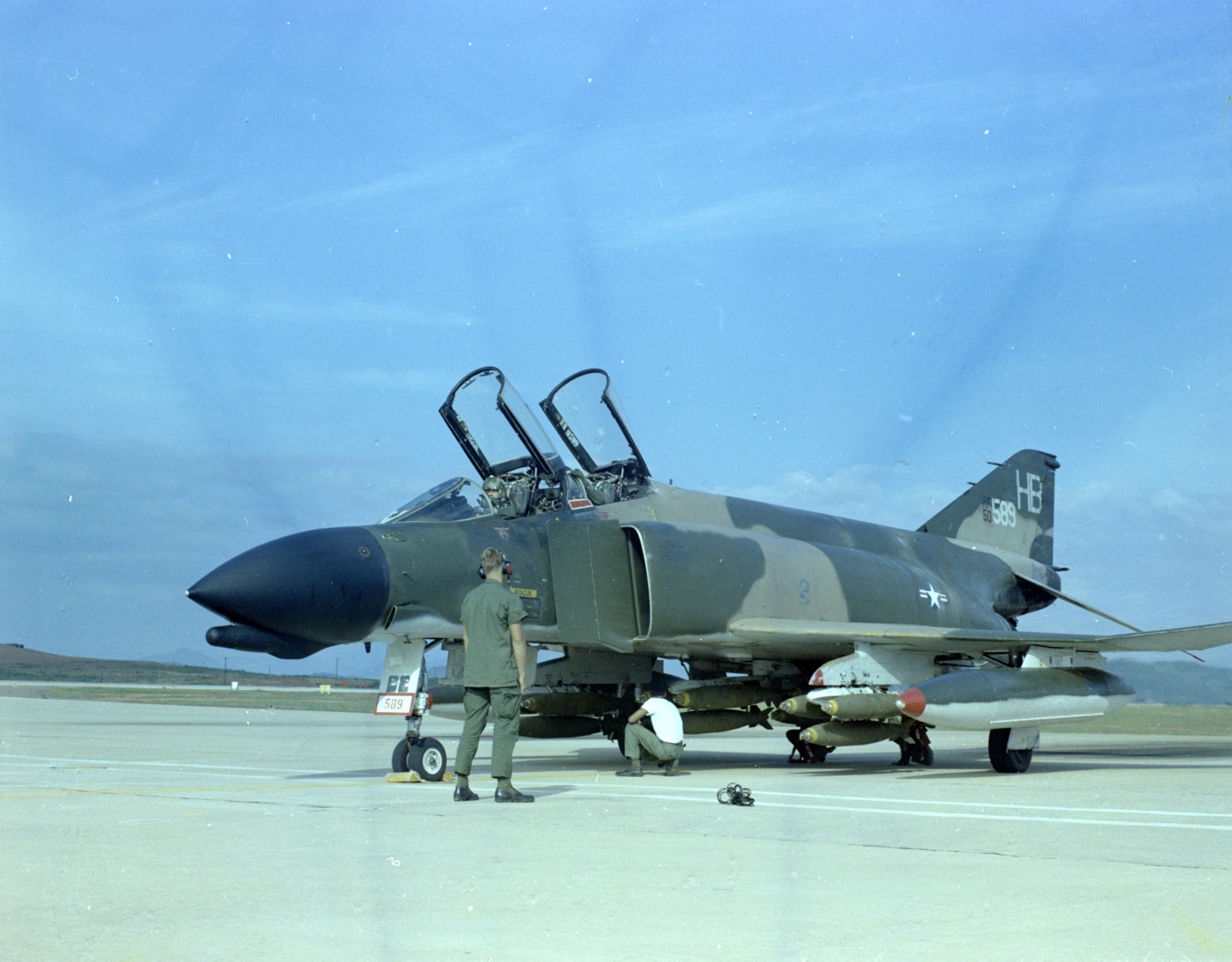
Two weeks later a Phantom became the first American jet shot down over Vietnam by a surface-to-air missile. The following year a Phantom was the first American combat aircraft shot down by a North Vietnamese MiG-21 wielding an air-to-air missile.
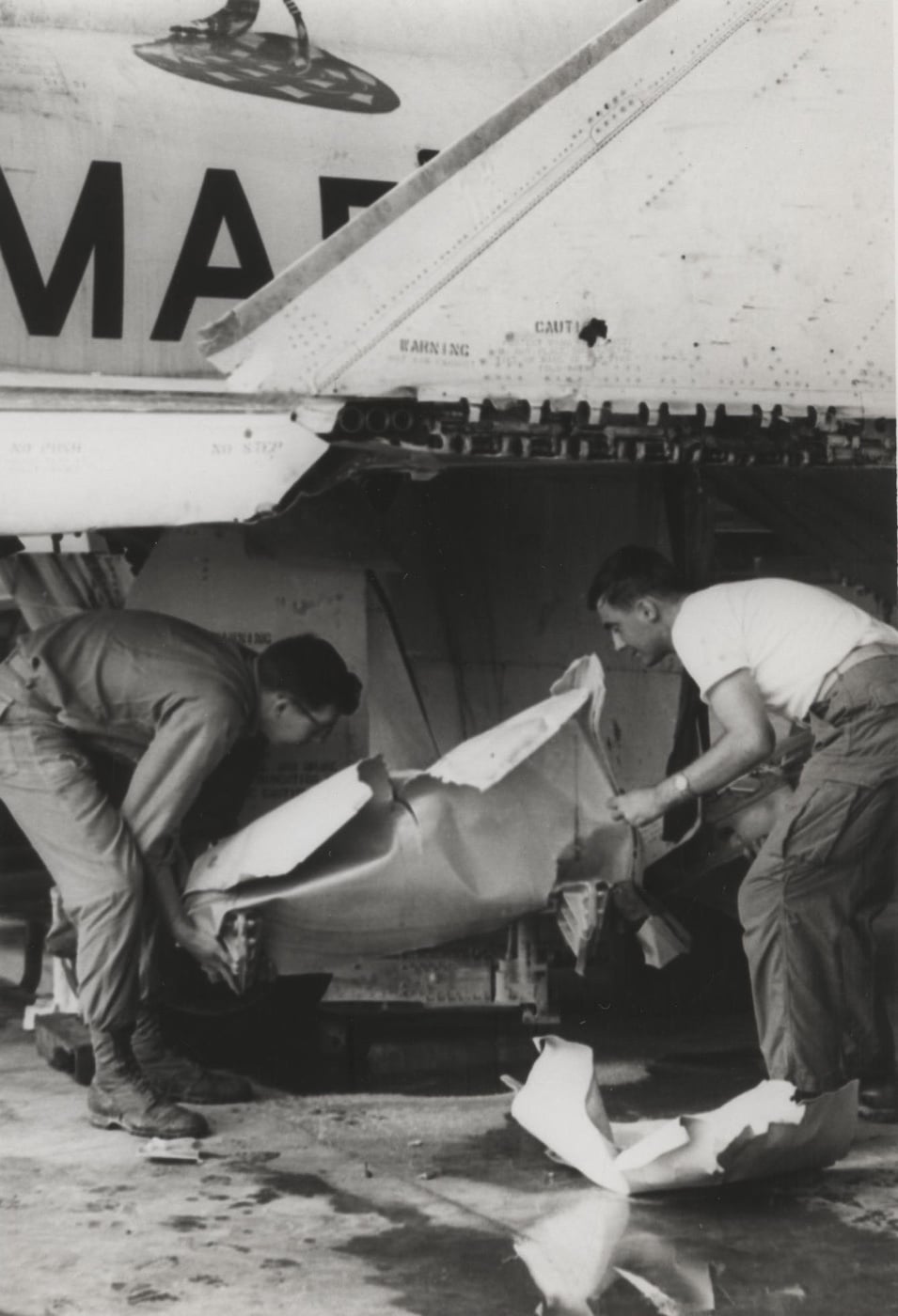
On 2 June 1972, an F-4 shot down a MiG-17 over Thud Ridge using its 20mm cannon while flying Mach 1.2. This was the world’s first supersonic air-to-air gun kill. By the end of the war, the F-4 had accounted for a total of 150.5 aerial kills for the loss of 42 Phantoms in aerial combat.
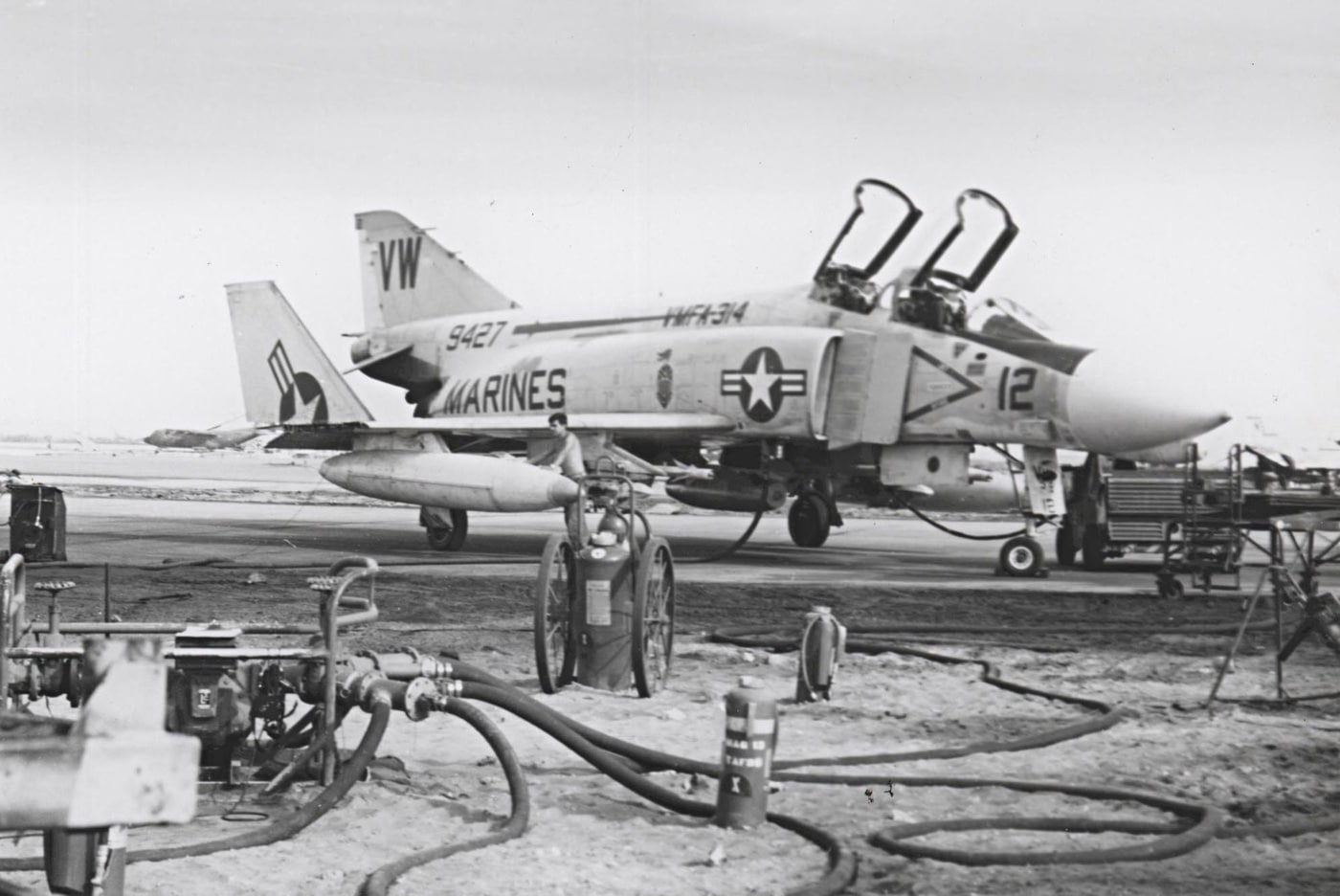
The Phantom was widely exported to American allies around the globe. The plane saw extensive use by Israel, Australia, Egypt, Germany, Japan and the UK, to name but a few. 5,195 airframes were produced. The last operational Phantom was retired from Japanese service in 2015.
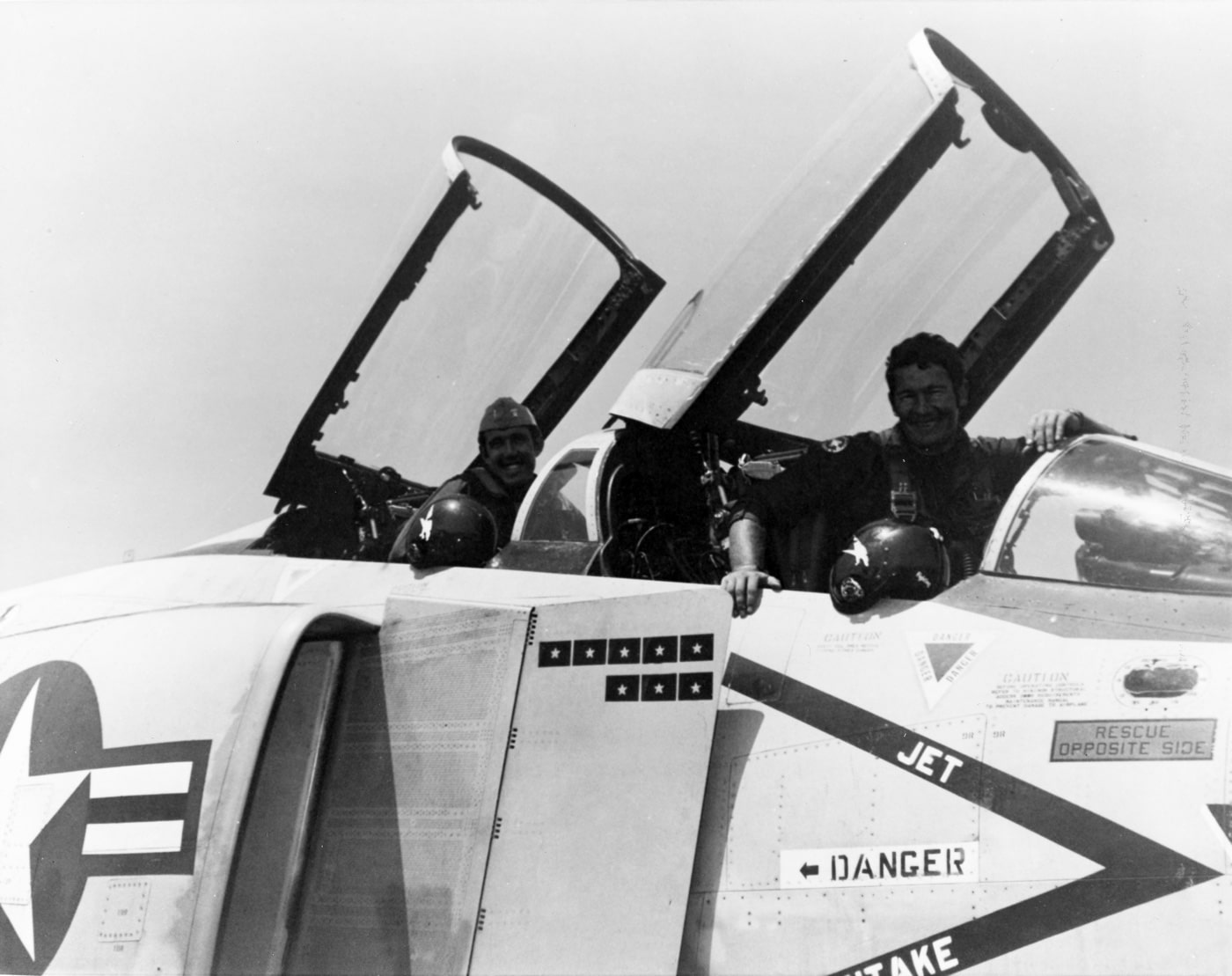
F-4E Phantom II — Technical Specifications
- Crew: 2
- Length: 63′
- Wingspan: 38′
- Max Takeoff Weight: 61,795 lbs.
- Powerplant: 2x General Electric J79-GE-17A afterburning turbojets producing 11,905 lbs. of thrust each
- Max Speed: 1,470 mph (approximately Mach 1.92)
- Ferry Range: 1,457 nautical miles
- Service Ceiling: 60,000 feet
- Armament: M61A1 Vulcan rotary cannon and up to 18,650 lbs. of mixed ordnance on nine external hardpoints
Denouement
I have a dear friend who was a Navy SEAL in Vietnam in the early seventies. At one point he found himself onboard an aircraft carrier in need of a trip ashore to South Vietnam. As they had a Phantom scheduled to make that hop, my buddy got to ride in the back seat. He described the catapult takeoff like being hit in the back with a boat paddle.
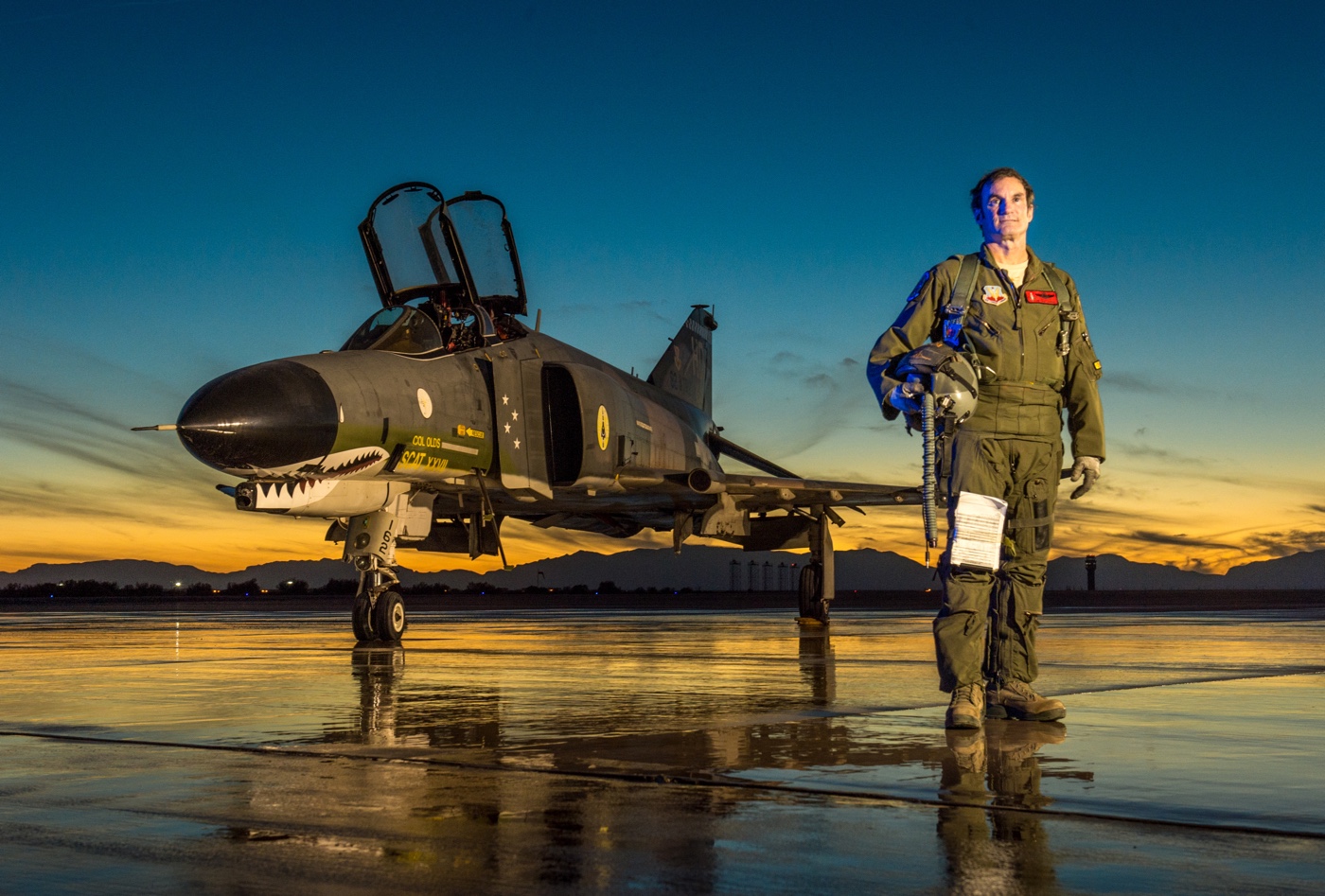
Like the country that built it, the Phantom was big, loud, powerful and inefficient. Early versions in particular produced vast quantities of smoke. However, the F-4 was adored by its crews. It flew with the Navy’s Blue Angels and acquitted itself well in sundry wars around the world.
Its operators referred to the big plane as the Rhino, Snoopy, Double Ugly and the Lead Sled. German operators called it the Iron Pig, the Flying Brick and the Air Defense Diesel. The most flattering sobriquet, however, was this — the F-4 Phantom II was also universally revered as the “World’s Leading Distributor of MiG Parts.” I can think of no higher accolade.
Editor’s Note: Please be sure to check out The Armory Life Forum, where you can comment about our daily articles, as well as just talk guns and gear. Click the “Go To Forum Thread” link below to jump in!
Join the Discussion
Continue Reading
Did you enjoy this article?

 568
568






